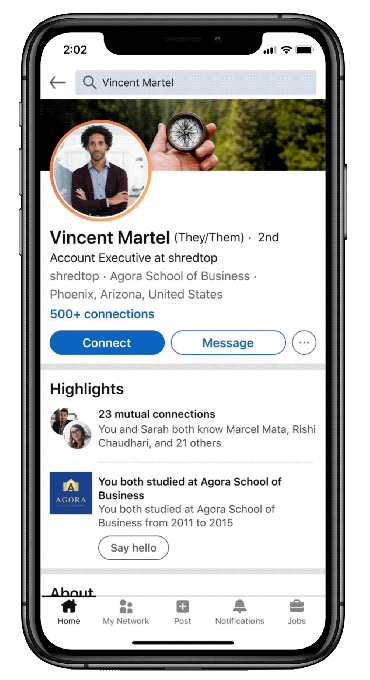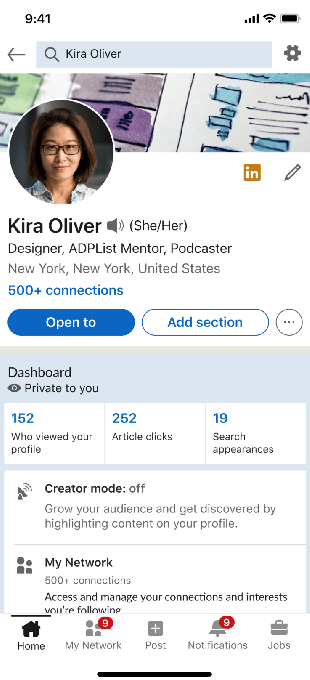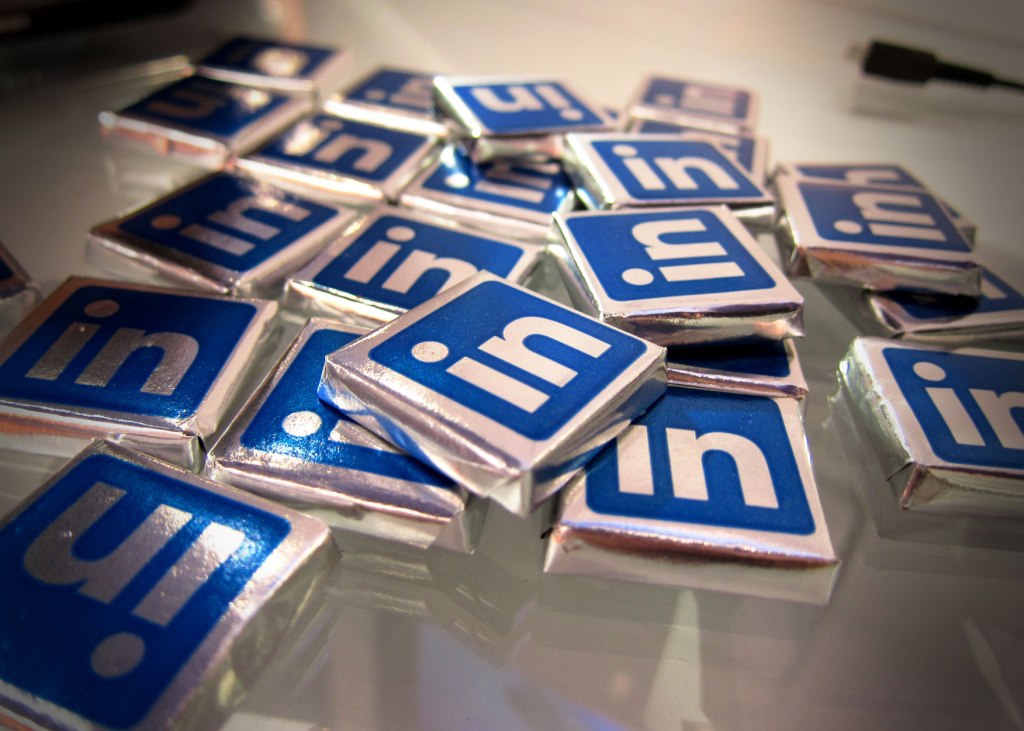LinkedIn, the social network now with 740 million users around the world, has carved out an identity for itself as the place online where professionals go to list their places of work, get headhunted for other work, and look for work. But for years it’s been looking for ways to better leverage that position to move into a plethora of adjacent areas, such as training and education, professional development, networking with others, and news. Today, the company unveiled a series of new features that it will be rolling out over the coming months to play into that strategy, and also, it hopes, increase engagement on the platform:
— The company is bringing more video into people’s profiles, with the launch of a “video Cover Story”, short videos that people can make talking about themselves to live on their home pages. And for people to feel more connected with how they are depicted on LinkedIn, it is also adding a pronoun feature.
— Alongside these, the company is officially launching a new “Creator” mode, a more refined but also more democratic version of the company’s Influencer network (anyone can be a Creator if they so choose, for a start). It’s also carving out more of a solid place for freelancers on the platform, by way of a new Service page attached to your profile.
— LinkedIn’s educational and training efforts are also getting some boost. The program was originally launched in June 2020 in the wake of the economic shift that Covid-19 brought on the world with Microsoft, which owns LinkedIn, to offer free online training in 10 different professional areas. Now that program is getting extended to the end of this year. The move comes as the companies passed 30 million people in 249 countries using the training service. LinkedIn and Microsoft now hope that the number of companies hiring via the program will reach 250,000.
In another team-up with Microsoft, LinkedIn is also announcing a new Teams-based app called Career Coach aimed at students that use Teams. Using AI tools from LinkedIn, the Career Coach helps its users identify what they are interested in and might like to pursue as a profession, and it uses links through to LinkedIn and Microsoft’s learning content that could help with that journey.
Taken together, this seemingly disparate set of announcements all lean into an interesting development for LinkedIn. Social media — whether you are a person posting content, or simply looking at posts from others that you feel speak to your situation in life — has a strong undercurrent of individual empowerment throughout it. Through these different features and products, LinkedIn is trying in its own way to bring some of that individual identity, voice, and self-advancement, through to its own platform.
Below are some more detailed thoughts about the various new areas.
 The video-based Cover Story plays on the idea of how people create short videos about themselves that they might post as a status on a more consumer-focused social media platform. If the list of places where you work and have worked or studied tell one kind of story about who you are, the idea is that the video selfie can tell another to fill in more gaps.
The video-based Cover Story plays on the idea of how people create short videos about themselves that they might post as a status on a more consumer-focused social media platform. If the list of places where you work and have worked or studied tell one kind of story about who you are, the idea is that the video selfie can tell another to fill in more gaps.
As LinkedIn’s chief product officer Tomer Cohen describes it, you can use the space to give yourself a more human angle, describing something about your interests or aspirations that might not come across in your resume. These also auto play when people come to visit your profile, which Cohen aptly refers to as a “Harry Potter” effect, in reference to the animated Daily Prophet newspaper in the wizarding world. For now these will only appear in your profile, but in time the animated pictures may also expand to search results.
It all sounds interesting enough, except that it relies quite a lot on people using the format successfully rather than creating something that might actually deter recruiters.
Ironically, if the trend is to remove some of what might profile and pigeonhole people too much when job-hunting, adding in these videos could serve to bring some of that kind of judgement back into play. It will depend on how they are adopted and used and viewed, at the end of the day.
LinkedIn’s focus on video comes as part of the company’s bigger engagement with the medium over the last several years, adding services like Live broadcasts into the timeline for example. It’s no surprise, considering how sticky video has been in the bigger realm of social media across services like TikTok, Snapchat, Facebook and Twitter.
That seems to also be playing out at LinkedIn and areas that align more closely with the company’s business: it said in a survey it conducted, some 61% of job seekers said that recorded video could be the next iteration of the traditional cover letter, and that among hiring managers, nearly 80% say video figures strongly in their candidate vetting. So it’s not a matter of testing the waters, but perhaps just making sure you have the tools to stay afloat.

Video is playing a bigger role beyond just that of helping everyone with profiles. For the most proactive, LinkedIn is launching a Creator mode, where people who already make LinkedIn Live videos and other content can shift over their profiles to becoming Creators instead of ordinary LinkedIn citizens. This is something you choose yourself, unlike the Influencer tag that LinkedIn confers on a smaller subset of thought leaders, and it means you can be “followed” on LinkedIn for people to watch and stay up to date with what you post.
While it’s hard to think of who might come to LinkedIn for entertainment in the same way that they might come to Instagram to follow a creator, the idea is that creating content for LinkedIn becomes the end in itself for both the person watching and the person being watched.
It looks like the natural progression of the original content that LinkedIn has been building up through its editorial operation led by Dan Roth — indeed the company announced the first steps for its Creator product last month, led by Roth. But unlike creators on platforms like Instagram or YouTube or TikTok, for now it doesn’t look like there are direct routes to monetization when you are a LinkedIn Creator. That might change, however.
“Indirectly we’ve been connecting people to opportunities since we first enabled people to share content on LinkedIn. Our members get leads and grow their business and following on LinkedIn,” said Keren Baruch, group product manager for LinkedIn’s creator strategy. She cited Quentin Allums, “jobless, broke, and desperate when he started posting LinkedIn videos. Then they started to go viral and he created his own business on LinkedIn from this success.
“As we continue to listen to feedback from our members as we consider future opportunities, we’ll also continue to evolve how we create more value for our creators,” she added.
The Service Pages also appear to be something that is the start of a product and project that LinkedIn started to seed in February, which will comprise a larger freelancer marketplace, reportedly by September.
As you can see, this seems to be a baby step: no links through to setting up payments or handling anything like that, and LinkedIn itself is not making a cut, as Fiverr or Freelancer.com might make from giving people a platform to generate business for themselves. For now, it could be just a way of testing the waters and getting some people to populate the site with credentials but further down the line could represent an interesting inroad into a new kind of advertising unit or payment services alongside the revenue-generating features that LinkedIn already has in the form of premium subscriptions, tools for recruiters and other kinds of advertising.
Lastly, given that LinkedIn has made such a big push into trying to democratize opportunity on the platform, providing a link for freelancers to post on its platform might also interestingly might open the door to more than just the knowledge workers and their skills. These currently form the majority of users of LinkedIn but are clearly not the entirety of the working world that the company hopes to address and serve in the longer term.

































Comment